5 Tips for Designing Your Accessible Bathroom
Are you planning a bathroom remodel and want to add accessible features? Many people want to “age in place” (stay in their own home) and are thinking about accessibility when they remodel bathrooms. Others are adding features for anyone who needs extra assistance. If you can, it is better to plan for accessibility during a new home build or remodel, rather than try to add it later on. Read on to get our top tips on which elements will help you design your accessible bathroom.
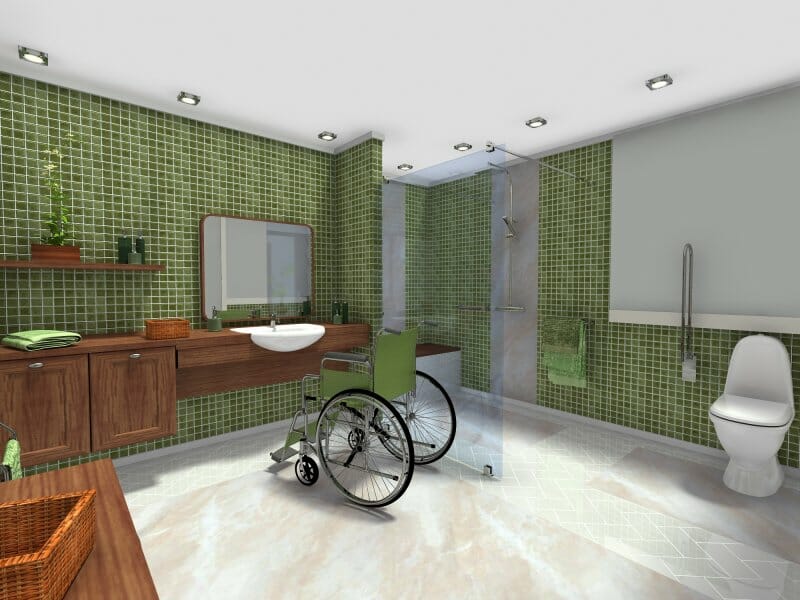
1. Bathroom Entry
A standard wheelchair is 24-27” (approx. 600- 690 mm) wide. In order to accommodate a wheelchair, the bathroom door should be at least 32” (815 mm) wide but ideally 36” (915 mm) wide. The extra space allows for easy access for a wheelchair, especially if the door is accessed from a hallway, and you’ll have to turn the wheelchair to enter.
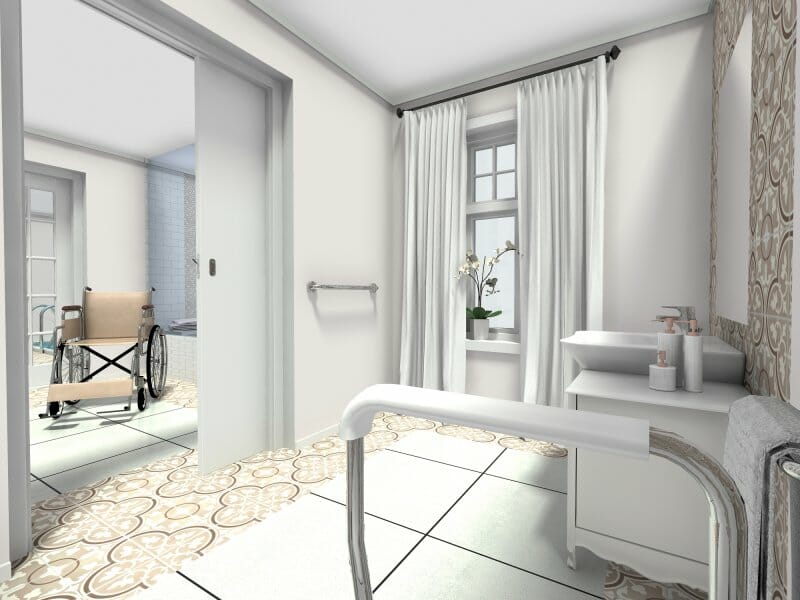
Additionally, a completely flat floor at the entry is best so that the wheelchair does not have to roll over a threshold or door sill.
2. Important Room Dimensions
The Americans With Disabilities Act (ADA), which among other things, provides design standards to help people with disabilities, suggests turning spaces be 60” (1525 mm) in diameter. You may notice a circular wheelchair symbol on floor plans for accessible units. The symbol demonstrates the clearance needed to turn the wheelchair.

In addition to the wheelchair circle, the floor plan example above also shows (in blue) the suggested space around the toilet for accessibility – a minimum 60-inch width space measured from the sidewall and a 56-inch space measured from the rear wall.
3. Accessible Sink Area
To allow a wheelchair user to roll directly up to the sink, choose a design that has either a slant or nothing directly underneath the sink. A pedestal sink is another possible choice. To make it easier to turn on the water, consider a long, single handle on the sink faucet.

Above the sink, a tilted mirror that is slightly angled down allows the wheelchair user to see themselves more easily. And rather than a medicine cabinet behind the sink, which could be hard to reach, consider having lower drawers for storage or a lower medicine cabinet placed in an accessible location.
4. Extra Space Around Toilet
As mentioned above, it is recommended to leave a space on one side of the toilet to be able to move the wheelchair close, and for those requiring transfer assistance. Grab bars near the toilet can also be helpful.
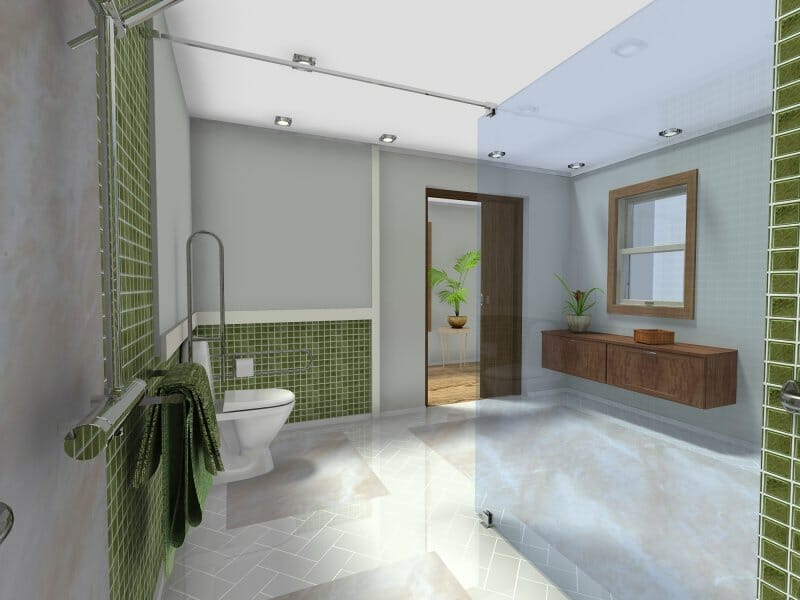
A “comfort height” (taller) toilet may be easier to use and a bidet can also be helpful. Finally, consider where the flush controls are for these devices. Make sure that they are in a location that will be easy for the user.
5. Flat and Wide Shower Entry
An accessible bathroom often includes a shower rather than a bathtub, for easier access, and safety. Additionally, a caregiver or spouse may need to help with the bathing process, so a shower space should be generously sized. The recommendation is generally 32” – 36” (915 mm) wide and 60” (1525 mm) deep so that it can accommodate a wheelchair as well as an extra person. The entry should ideally be 36” (915 mm) wide and flat (curbless) or close to flat at the entry point – you want the ability to wheel directly in, without a high curb.
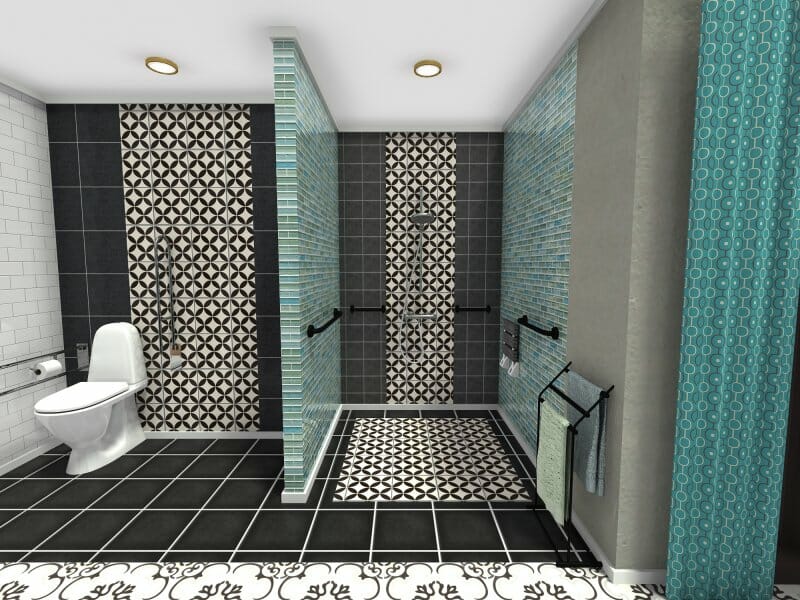
A fold-down bench, portable stool or fixed bench is a nice feature in the shower area. The shower mechanism controls should be easy to reach. A shower-spray mechanism with a hose gives the user flexibility to wash, or for a caregiver to help.
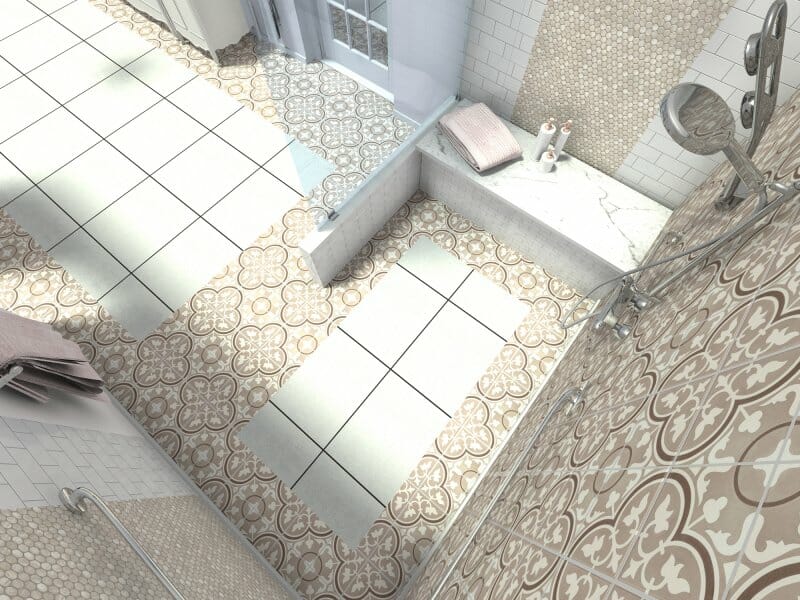
Get Started
Once you’ve studied up on accessible features, your next steps could be to visit bathroom showrooms to see accessible products and then to mock-up your floor plan and design ideas.
All of the photos and floor plans in this article were created in the RoomSketcher App. With RoomSketcher, every user can access the RoomSketcher App and take snapshots for free, so you can start your accessible bathroom planning straight away. To see more images and views of the accessible bathrooms showcased in this post, open these project presentations:
- Green Tile Accessible Bathroom Project Presentation
- Beige and Pink Deluxe Accessible Bathroom Project Presentation
- Teal and Black Accessible Bathroom Project Presentation
Once you open a project presentation, you can also try out a 360 View of one of the rooms, and download the RoomSketcher App to edit the project. When your bathroom layout is ready, upgrade to a paid RoomSketcher subscription for awesome 3D features such as – 3D Photos, 3D Floor Plans, and interactive Live 3D!
Get started on your accessible bathroom floor plan today!
Don't forget to share this post!
Recommended Reads
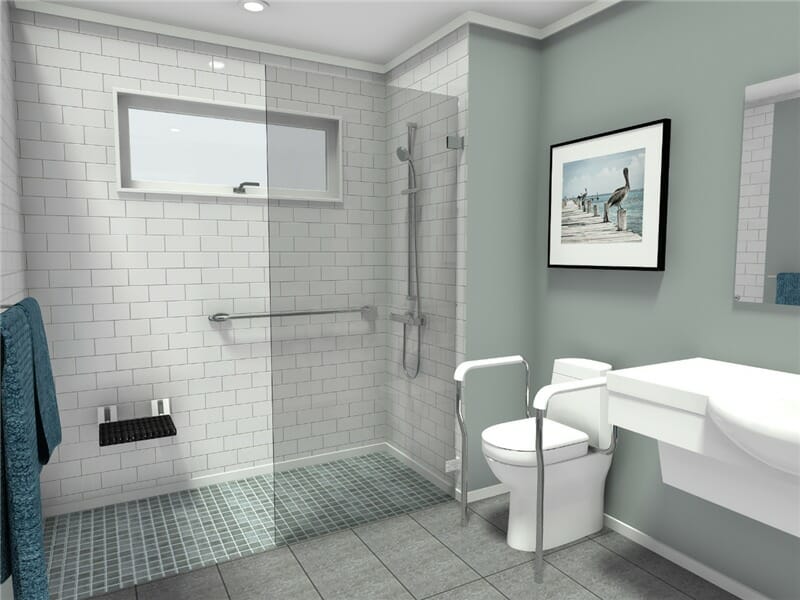
Design a Wheelchair Accessible Senior Bathroom
Here are some of the top steps to design a wheelchair accessible senior bathroom.
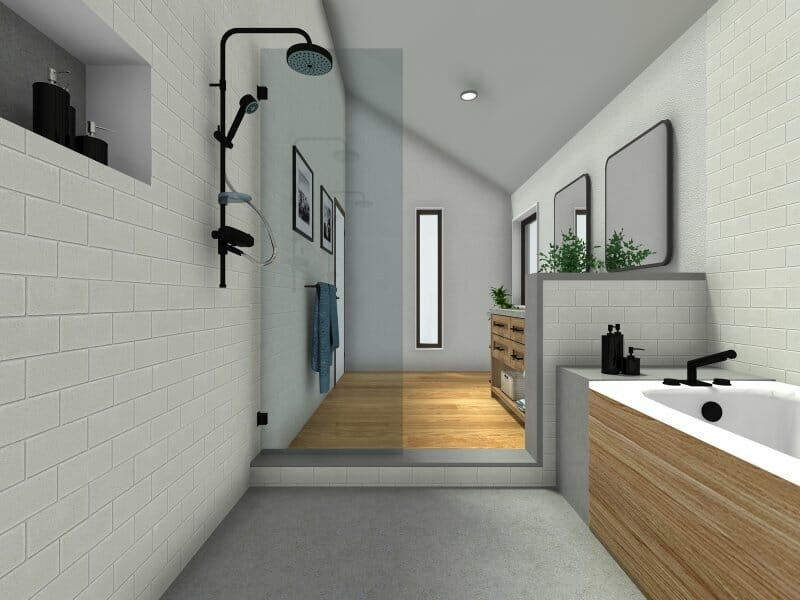
10 Must-Try New Bathroom Ideas
Looking for new bathroom ideas? These ten expert bathroom ideas are all you need to inspire your next bathroom design. Find bath décor, tiles, sinks, vanities and more!
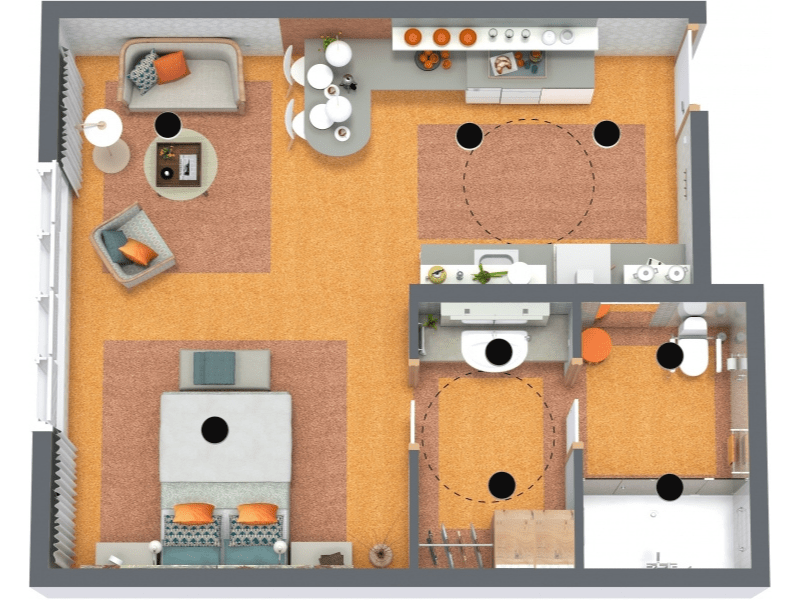
Apartment Floor Plan - Universal Design Ideas
Universal Design ideas that are easy to implement when designing your apartment. Lots of practical tips and inspiration. Learn more!